The City of Prague Museum’s long-term temporary exhibition (June 13, 2018 –February 24, 2019) called “Prague 1848-1918” showcases influential events from a 70-year span and describes how these moments affected the city. Visitors will follow the development of Prague from an enclosed town to a city with extensive suburbs. The displays show popular places in Prague and the ways in which they have changed throughout the decades. Visitors start with the 1848 fighting at the barricades as the inhabitants and the imperial army came to blows during the Praguers’ rebellion against the Emperor. The exhibition ends on a more positive note with President Tomáš Garrigue Masaryk returning with much fanfare to newly born democratic Czechoslovakia in December of 1918.
One of the most interesting displays describes how the Prague-based events of October 28, 1918, when Czechoslovakia was established, unfolded almost hour-to-hour. You will see crowds gathered on Wenceslas Square to hear the announcement about the founding of the new country at 11:00 a.m. Another picture shows a firefighter putting the Czechoslovak flag above the statue of St. Wenceslas on Wenceslas Square. Emblems of eagles, the symbol of the Austro-Hungarian Empire, are triumphantly removed from buildings.
The 1848 rebellion against Austro-Hungary is evident in impressive lithographs, including one showing the National Guards and students in historical dress, ready to fight, and another of Slavic students studying in Prague and Vienna, donning colored uniform hats as they prepare for battle.
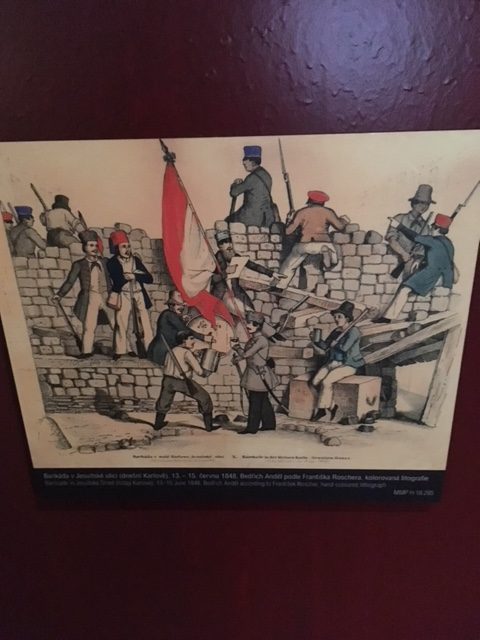
Theatre played a prominent role in the land during this period, and the world of drama receives much attention. A drawing of the interior of the National Theatre shows rubble and ruins after a fire destroyed it in 1881. However, less than two years later, the National Theatre would reopen to much acclaim.
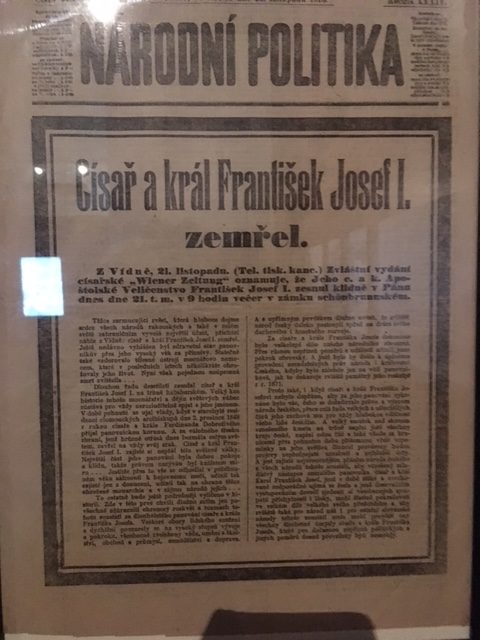
Technology and means of transportation are highlighted. Visitors see pictures of the funicular that used to go to Letná Park and the one that still goes up to Petřín Hill. You will see horse-drawn trams being replaced by trams run by electricity.
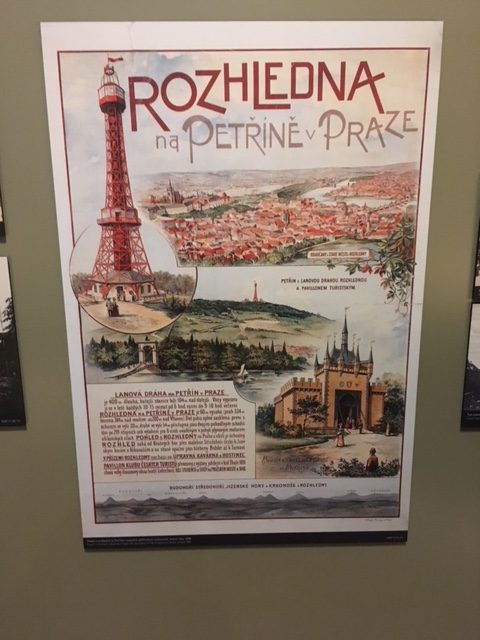
World War I’s impact on Prague is superbly described. Men aged 18 to 53 went to war while wounded soldiers were cared for in Prague. Food shortages afflicted the population. Church bells were removed so that their metal could be used for military purposes. As if that was not enough, epidemics of cholera and typhoid broke out in Prague as the war slowly reached its conclusion.
A superb painting shows Masaryk returning to Prague on December 20, 1918, as the exhibition describes the first few months of the new state. Several pictures show Masaryk being welcomed in Prague by large crowds. This exhibition shows the impact of historical events on the city and highlights the changes in the city from the rebellion against the monarchy through the establishment of a new country.
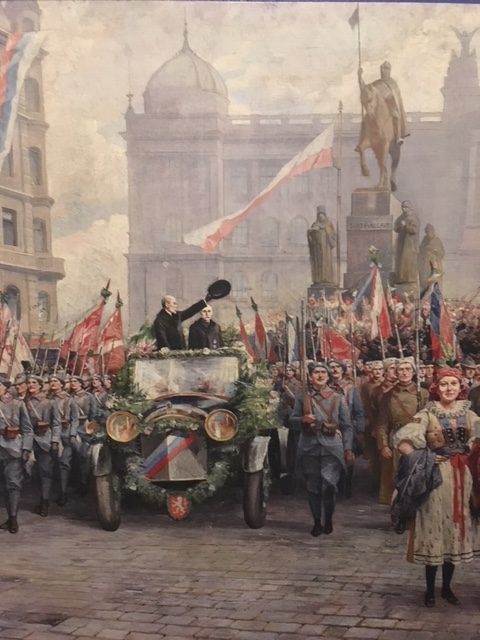
Visitors should not pass up touring the permanent exhibition, either, as it shows how Prague developed and changed from prehistory through the Baroque era. The descriptions are top-notch, the artifacts very impressive.
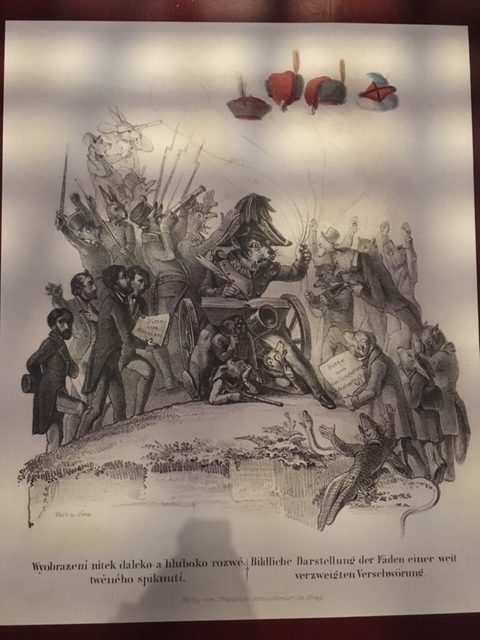
One of the most significant exhibits is Antonin Langweil’s model of Prague, created from 1826 to 1837. While working as a library assistant in the University Library at the Clementinum, he meticulously constructed a model of the city showing actual buildings in the minutest detail. This remarkable portrait of Prague’s districts and monuments was three-dimensional before 3-D viewing was created. Unfortunately, Langweil died in 1837, before he could finish it, but the large portion that he completed is a breathtaking accomplishment. Prague Castle, the Charles Bridge and the Lesser Quarter main square are a few of the landmarks he constructed. A 3-D film about the model takes viewers on a journey from the Old Town to St. Vitus Cathedral, passing through the Old Jewish Cemetery, the Charles Bridge, the Lesser Quarter and St. Nicholas’ Church in that district.
It is a shame that the permanent exhibition ends with the Baroque era. It would be nice to see exhibits that take visitors through the Velvet Revolution of 1989 to the reestablishment of Czechoslovakia and the founding of the Czech Republic. A permanent exhibition focusing on Václav Havel should also be created.
The City Museum of Prague (Muzeum hlavního města Prahy), Na Poříčí 52,
Prague 8. Open daily 9 am to 6 pm except Mondays. Near Florenc Metro.
